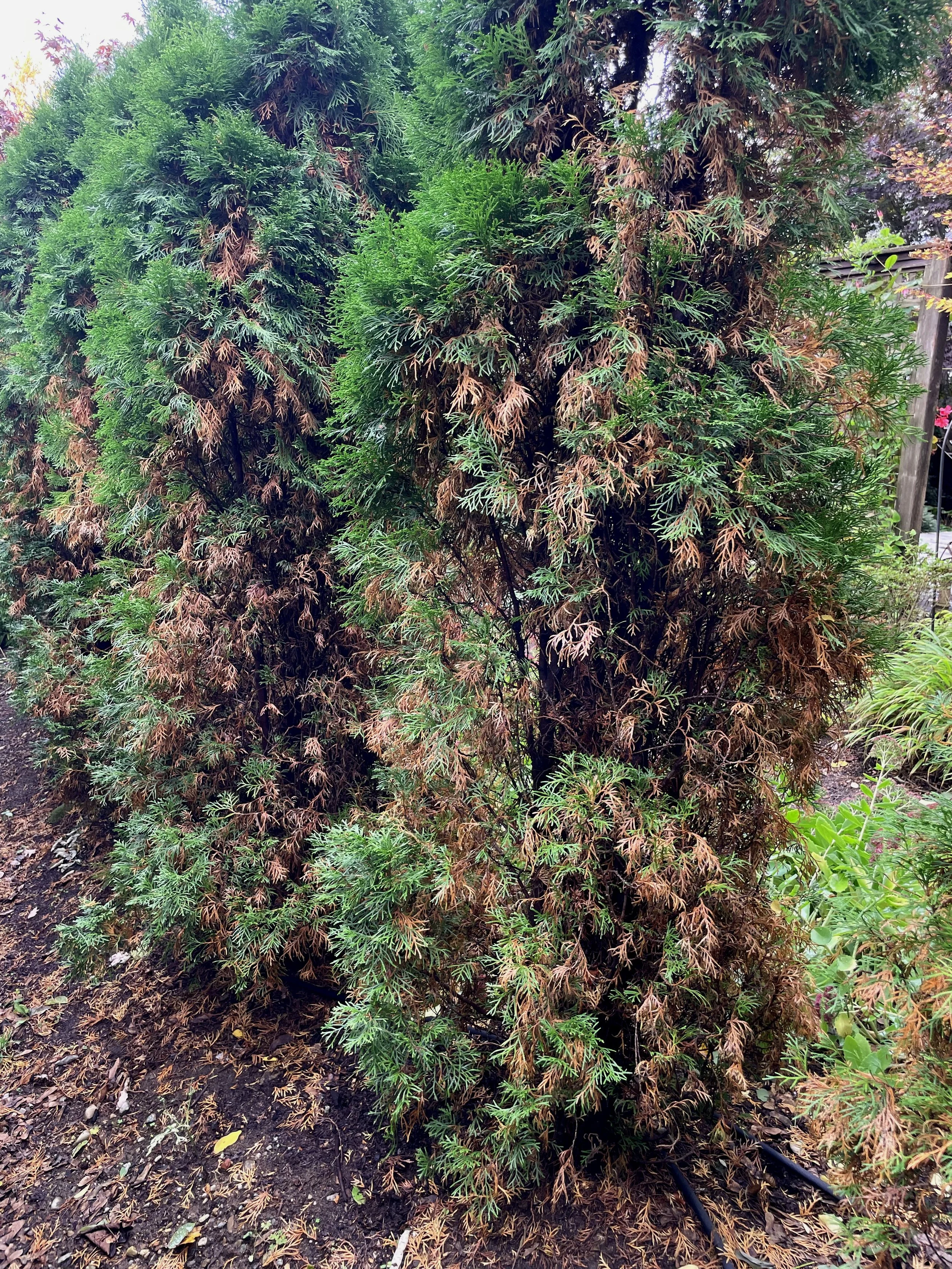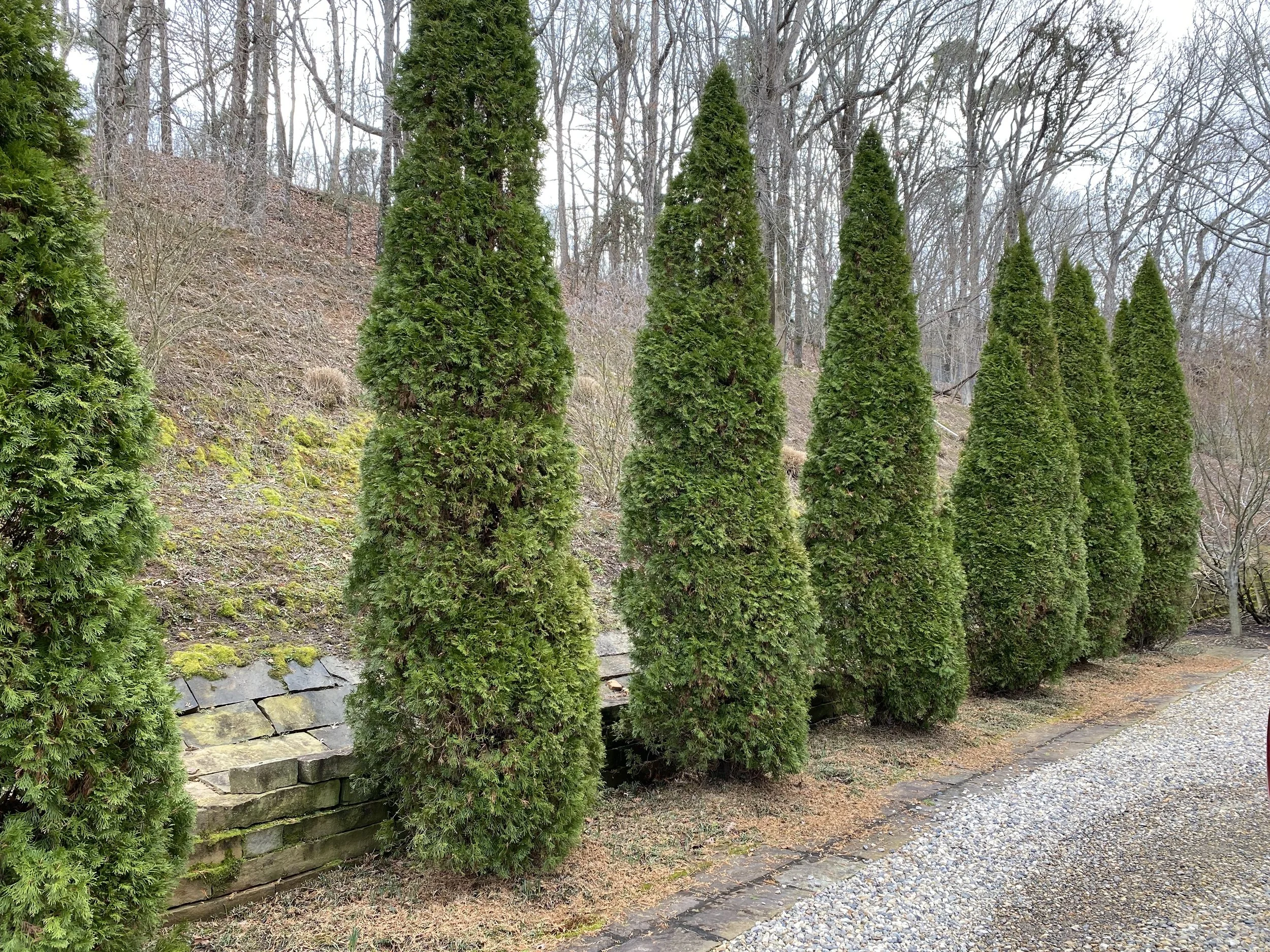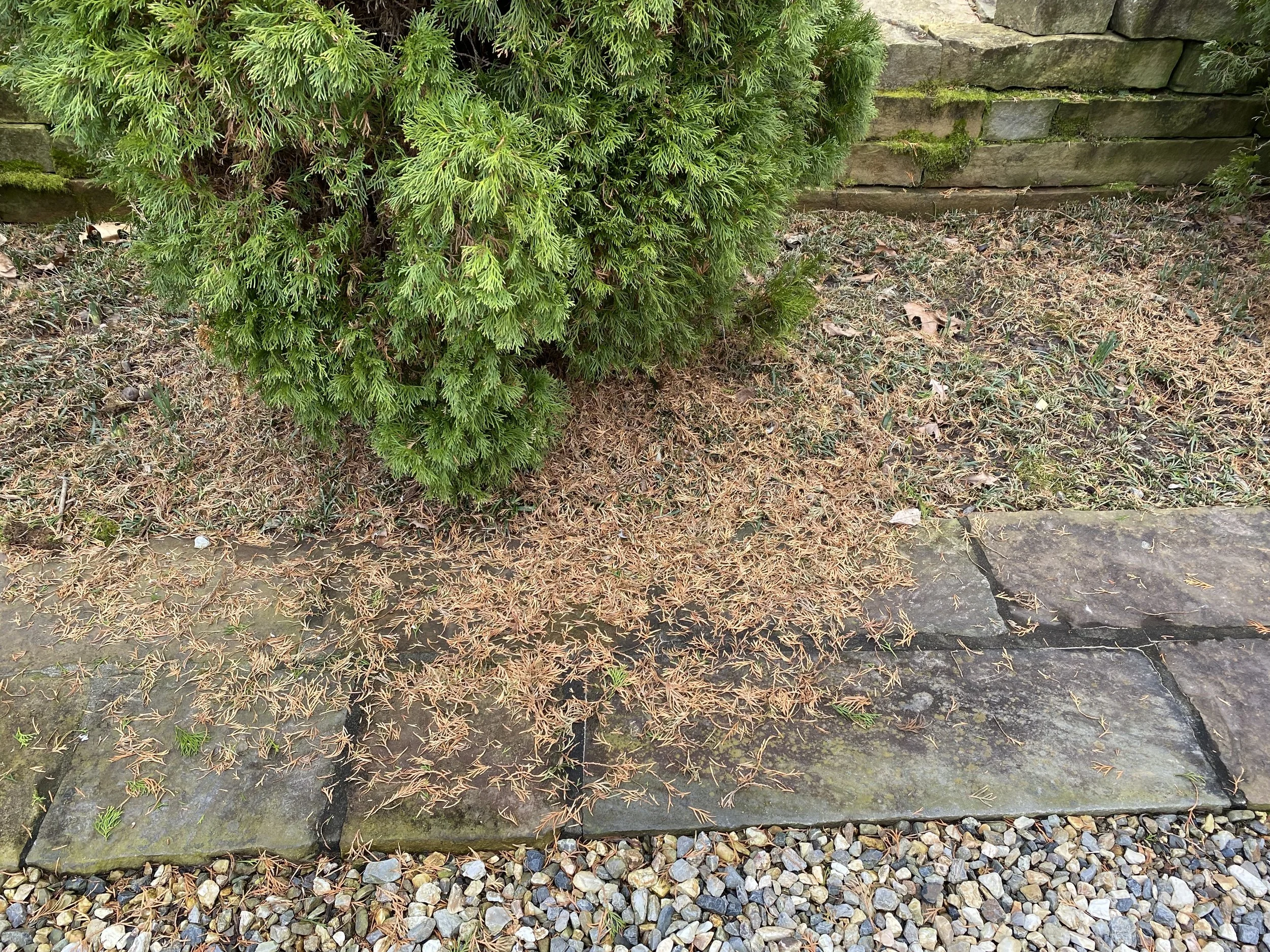Needle Drop
As fall arrives, many homeowners notice their pines, spruces, and arborvitaes dropping needles, often causing concern. If your evergreen trees are shedding yellow or brown needles, don’t panic! In most cases, this is a natural process—but in some instances, it could indicate a more serious issue.
Why Do Evergreens Shed Needles in the Fall?
Unlike deciduous trees that lose all their leaves at once, evergreens shed older needles gradually as part of their natural life cycle. Generally, needles live for about two years before they turn brown and drop off, usually in the fall.
✔ Normal Fall Needle Drop occurs on the inner part of the tree, closest to the trunk.
✔ These older needles turn yellow, tan, or brown before falling, making room for fresh growth in the spring.
✔ The fallen needles act as natural mulch, helping retain moisture and enrich the soil.
For arborvitae, needles will transition from green to tan/yellow, then brown before dropping. This is all part of a healthy evergreen’s seasonal cycle.
Environmental Stressors
🔹 Drought – Arborvitae need well-drained soil but also consistent moisture. Extended dry periods can cause needle browning and premature drop. Water deeply once a week during droughts to encourage deeper root growth.
🔹 Overwatering & Root Rot – On the flip side, excessive moisture can cause root death due to a lack of oxygen. Poor drainage and heavy, saturated soils often lead to root rot, which causes needle yellowing and drop.
🔹 Winter Damage – Even though evergreens are built to withstand cold weather, harsh winter conditions (such as extreme cold, wind, or heavy snow) can damage branches and needles.
🔹 Improper Pruning – Unlike deciduous trees, evergreens should not be heavily pruned. Cutting back beyond the live needle area can kill branches permanently.
🔹 Transplant Shock – Recently planted or relocated trees often struggle with water uptake, leading to browning. Keep the soil evenly moist (not soggy) for the first year after planting.
How to Help Your Evergreens Recover
If your evergreen is experiencing abnormal needle loss, here are some steps you can take:
✅ Check for Pests & Diseases – Inspect the tree for bagworms, mites, or fungal issues. Early intervention is key.
✅ Water Wisely – Keep soil moist but well-drained. Water deeply during droughts, but avoid overwatering.
✅ Avoid Heavy Pruning – Only remove dead or diseased branches in late winter or early spring.
✅ Protect Against Winter Damage – If extreme cold is expected, consider wrapping young or sensitive trees in burlap to reduce winter stress.
✅ Use Proper Fertilization – A balanced, slow-release fertilizer can support recovery and encourage new growth.



